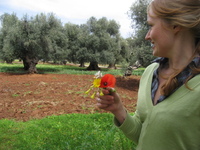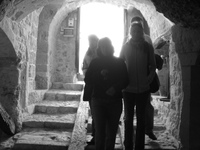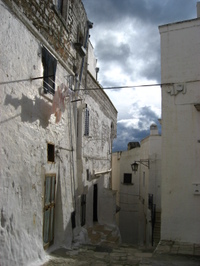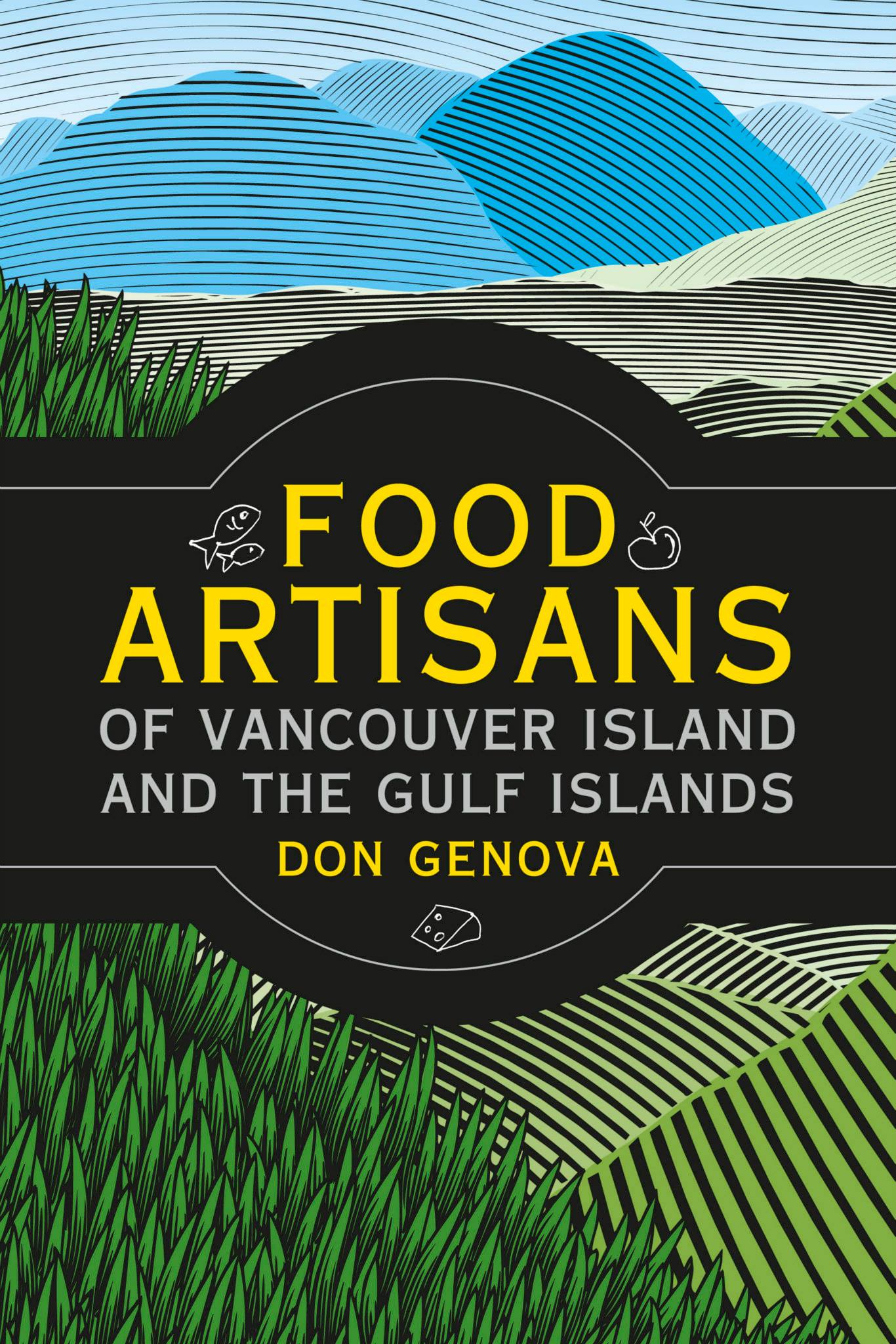 Okay, so Ah, Puglia is a play on words, as Puglia used to be known, and you can still see it on many maps, as Apulia. I thought it was an appropriate title to start this post as we enter into the last day of our field trip in this region. Over the past couple of days we have seen the best Puglia has to offer in terms of landscapes, quaint villages dating back to medieval times, and of course food and wine. The shot at the left (photos by Betsy Manning again in this post) was taken in a marine park where the delicate shoreline ecosystem is being protected.
Okay, so Ah, Puglia is a play on words, as Puglia used to be known, and you can still see it on many maps, as Apulia. I thought it was an appropriate title to start this post as we enter into the last day of our field trip in this region. Over the past couple of days we have seen the best Puglia has to offer in terms of landscapes, quaint villages dating back to medieval times, and of course food and wine. The shot at the left (photos by Betsy Manning again in this post) was taken in a marine park where the delicate shoreline ecosystem is being protected.
 Before heading to the marine park we spent some time in an ancient olive grove…which was also the home to some beautiful wildflowers, as ably demonstrated by classmate Jessica in this photo. All the olive trees in this grove used to be owned by a single nobleman. After the Second World War and Italian reformation, the land was redistributed to local farmers in plots deemed large enough to support their families based on subsistence farming. In amongst the olive trees other crops such as peas and fava beans were planted.
Before heading to the marine park we spent some time in an ancient olive grove…which was also the home to some beautiful wildflowers, as ably demonstrated by classmate Jessica in this photo. All the olive trees in this grove used to be owned by a single nobleman. After the Second World War and Italian reformation, the land was redistributed to local farmers in plots deemed large enough to support their families based on subsistence farming. In amongst the olive trees other crops such as peas and fava beans were planted.
 The average age of these olive trees is 500 years. That’s FIVE HUNDRED YEARS! The physiology of the tree trunks are a great example of Mother Nature’s ability as a sculptor. The trees can survive almost any trauma. Quite often they get a disease which eats away at the inside of the trunk, but the farmers do what they can to remove the dead wood and the trees continue to thrive, with an elaborate twisting of the trunk and major branches that go off in all directions. Even if an old olive tree is burned to the ground, or chopped off, or damaged by cold weather, eventually new growth will sprout again and the life cycle continues.
The average age of these olive trees is 500 years. That’s FIVE HUNDRED YEARS! The physiology of the tree trunks are a great example of Mother Nature’s ability as a sculptor. The trees can survive almost any trauma. Quite often they get a disease which eats away at the inside of the trunk, but the farmers do what they can to remove the dead wood and the trees continue to thrive, with an elaborate twisting of the trunk and major branches that go off in all directions. Even if an old olive tree is burned to the ground, or chopped off, or damaged by cold weather, eventually new growth will sprout again and the life cycle continues.
 One of the highlights of the day was visiting a subterranean olive oil mill that was recently refurbished and turned into a museum by a major olive oil producer in the area. We learned that many mills were built underground centuries ago for a number of reasons, one being security, another is that a cave can keep the temperature low during milling operations, or at least have temperatures more easily maintained. When the owners of the mill were researching its history, they discovered a very important document. This document detailed the expansion of the mill, and it was dated in the 1430’s!
One of the highlights of the day was visiting a subterranean olive oil mill that was recently refurbished and turned into a museum by a major olive oil producer in the area. We learned that many mills were built underground centuries ago for a number of reasons, one being security, another is that a cave can keep the temperature low during milling operations, or at least have temperatures more easily maintained. When the owners of the mill were researching its history, they discovered a very important document. This document detailed the expansion of the mill, and it was dated in the 1430’s!
 This is a line of what were once 8 separate presses. The owner of the mill is demonstrating how these presses were turned by hand to extract the oil and water from a paste that was made from crushed-up olives. The paste was made by pouring ripe olives into a basin with a couple of millstones that were turned by donkeys or horses. This was one more reason why the mills were carved out of the rock. The roof could withstand the upward pressure of the presses as they were cranked to extract the oil. The oil and water would then drain into holes carved into the stone in front of the presses. The oil floats on top of the water, and could then be drained off.
This is a line of what were once 8 separate presses. The owner of the mill is demonstrating how these presses were turned by hand to extract the oil and water from a paste that was made from crushed-up olives. The paste was made by pouring ripe olives into a basin with a couple of millstones that were turned by donkeys or horses. This was one more reason why the mills were carved out of the rock. The roof could withstand the upward pressure of the presses as they were cranked to extract the oil. The oil and water would then drain into holes carved into the stone in front of the presses. The oil floats on top of the water, and could then be drained off.
 I’ll leave you with one more great shot from the "the White Town" ("La Città Bianca", in Italian), Ostuni. We stopped there for a short visit and went within the walls of the medieval city. Check out the Wikipedia link for historical info. Off to Brinidisi now for the afternoon fish market…more posting to come!
I’ll leave you with one more great shot from the "the White Town" ("La Città Bianca", in Italian), Ostuni. We stopped there for a short visit and went within the walls of the medieval city. Check out the Wikipedia link for historical info. Off to Brinidisi now for the afternoon fish market…more posting to come!



Don
how many students are on your program?